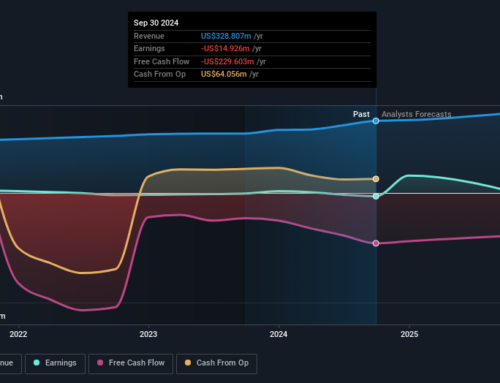Accessibility Is Worth Investing In: Why Hollywood Must Prioritize Disability Inclusion
December 30, 2024
When “CODA” — a film that starred multiple actors who are deaf or hard of hearing — won numerous awards, including best picture, in 2022, disabled creatives and advocates had reason to hope: Maybe Hollywood had learned that disability inclusion was, aside from being the “right thing to do,” also business savvy.
People with disabilities represent 28.7% of the viewing and purchasing audience in the U.S. (more than 70 million people), or about 16% of the world’s population (1 billion people). In 2022, only 1.9% of speaking characters in the top 100 films had a disability, according to a recent study. This number has remained relatively unchanged since 2015.
In 2017, Easterseals Disability Services, the largest disability services organization in California, partnered with Nic Novicki, an actor, comedian and producer, to expand what is now known as the Easterseals Disability Film Challenge, which has gone on to support filmmakers in creating over 750 short films, drive new employment opportunities and spark an industry-wide commitment to advancing authentic disability representation and inclusion. And in 2018, Easterseals and Variety collaborated on the report “Abilities Unlimited,” which highlighted how people with disabilities are key to helping Hollywood reach a largely untapped market.
Recently, Novicki joined five other creatives — writer-director Ashley Eakin; actor, comedian and host of “Take Your Shoes Off” podcast, Rick Glassman; writer and director of “CODA,” Siân Heder; actor and director Sue Ann Pien; and showrunner of “Only Murders in the Building,” John Hoffman — for a conversation about the current state of disability inclusion and representation in entertainment.
Increasing Visibility
Shifting the perception of disability happens before the cameras even start rolling, often with a very personal perceptual shift, participants agreed. Pien and Glassman worked together on a TV show called “As We See It,” about autistic 20-somethings living together and navigating the world around them.

Dan Doperalski
For Glassman, being diagnosed with autism as an adult helped put the world in focus for him on the show. “I met so many people that were all so different from one another, talking about that specificity of story and things you don’t just make up. … It was a very emotional experience,” he shared.
Pien shared, “That was the first time as an adult female who’s highly masking autistic [that] I was put in an environment where I was safe to just be myself. I’m not weird or out of place or I don’t belong in this world — I fit in right here.”

Dan Doperalski
Heder added, “We are all human. We all have bodies; we all relate to those bodies and each other in different ways. It’s been very eye-opening to step into this community and realize the untapped potential that exists here.”
Speaking about the “wealth of talent” he discovered while creating and casting for “Only Murders in the Building,” Hoffman said, “I get excited by people’s experiences and that is what I love writing. I love engaging anyone with a different experience and a worldview, so characters are richer. It’s the beauty of this wealth of talent. That gets me excited just as a writer, director and creator … that to me is what the best storytelling always has been.”
Accommodating All
All agreed that accommodations for disabled cast and crew on a set should be part of the preproduction and budget discussion, along with having them as part of the full pipeline. “You have to have creators who identify [as disabled],” Pien said.
Eakin recalled a show she directed, “Best Foot Forward” (which was developed by a disabled creative), that included a production accessibility coordinator, a below-the-line crew member who identified access needs for the cast and crew, and ensured production spaces were accessible. Eakin also noted that more productions are building the position into projects, and that she hopes eventually they’ll be as common as an intimacy coordinator on set.
Cost-wise, it also makes sense, added Novicki. “If you plan for that ahead of time, it’s probably going to be cheaper than if you wait until the day [of shooting].”

Dan Doperalski
On “CODA,” Heder noted that other crew members who might not be considered disabled viewed the accessibility coordinator as a “safe space” to disclose experiences they were navigating, such as nonapparent disabilities or injuries. “You’ve got grips struggling physically but cannot say anything because there’s no safe place to do that [on other productions],” she recalled.
Openly Communicating
Misperceptions, attitudes, and stigma toward disability are still challenging to overcome. Heder recalled how people would “tie themselves in knots” trying to find the right disability-related language to speak with the actors during the press tour for “CODA” — something she experienced while making the film. “But the fear of misstepping or getting it wrong prevents engagement,” she warned.

Dan Doperalski
There’s a reflexive, shared fear around communicating, several panelists noted. “We don’t know where people are on their disability journey,” Eakin said. Just asking questions about a person’s disability can feel invasive, especially if those are the only questions a person is asking, she added. But Glassman noted, “If we can’t ask these questions, it’s going to stay curious.”
And yet, Heder said, “There is so much work that is asked of disabled people to be educating nondisabled people all the time.”
Getting the Industry to Step Up
The goal is to expand disability representation to the point where the presence of disabled actors and crew is normalized on sets. It shouldn’t be just one individual who represents the disability community, because disability is not a monolith.

Dan Doperalski
The Easterseals Disability Film Challenge is striving to widen this range for disabled actors. During the discussion, Novicki recalled sending 30 films from the program to a studio when a rep asked for his help in casting an autistic character in an upcoming film, “The Accountant 2.”
“Ultimately, if that role wasn’t written specifically looking for somebody on the autism spectrum … [the lead actor who is nondisabled] would have gone in again,” he said.

Dan Doperalski
Even with these advances, though, do gatekeepers understand the market? “They would say they do,” said Hoffman. But inclusion here isn’t as obvious as raw data, he added. “It’s not diversity in the way that is pragmatically planned out in the studios’ minds. It’s diversity that feels like life. … It’s all about finding the people who are … willing to say, ‘Oh, my god, we’re better off doing that because I haven’t seen that before.’”
To Heder, Hollywood is not currently “an environment that is conducive to risk-taking.” But she suggests that including disabled cast and crew members isn’t actually a risky move. “There’s a miscalculation of how much audiences are craving these stories,” Heder said. “This is a community that … if we live long enough, probably all of us are going to end up being part of.”
Financially, morally or just because it makes sense, disabled stories are likely to start finding more platforms, which means a wider range of characters and more opportunities to fill all kinds of roles behind the camera.
“People can smell authenticity,” said Heder. “They can smell when it’s a retread of the same stuff that’s been fed to them over and over. There’s also this idea that … ‘We should be telling these stories. People should know what goes on with this community.’ That’s not the reason to tell these stories [though]. Tell these stories because they’re fun. They’re entertaining — and they’re sexy.”
Search
RECENT PRESS RELEASES
Related Post



